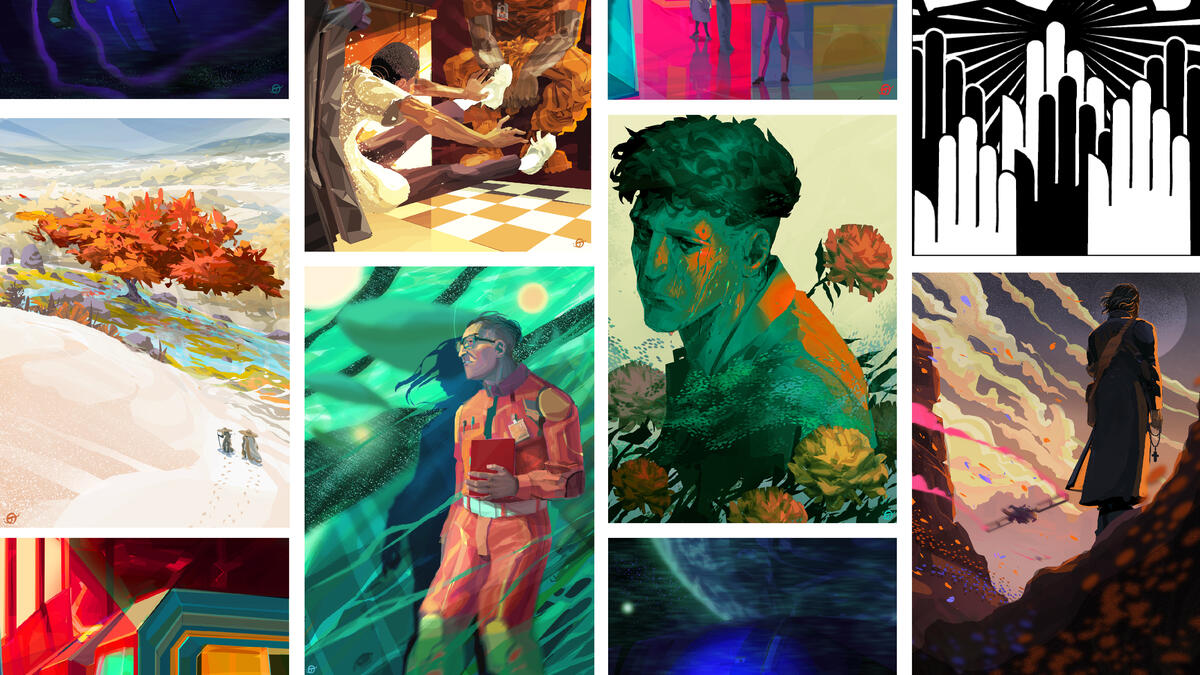ASU collaborates with Horizon 2045 to explore a post-nuclear existence in 'Far Futures'

By Bob Beard
For nearly a century, nuclear deterrence theory — a paradoxical concept that nuclear weapons somehow make the world safer — has dominated the geopolitical landscape, informing technological development, international business dealings and government policies that affect all aspects of civil society.
Explore
Far Futures is an evolving library of stories, experiences and data-driven scenarios.
Learn more at FarFutures.horizon2045.org
But what becomes possible when nuclear weapons have been removed altogether from the human story? This is the question animating “Far Futures,” a new collection of creative works curated by Arizona State University’s Center for Science and the Imagination and Horizon 2045, a nonprofit that develops collaborative processes for learning and leading across existential threats — including the threats posed by nuclear weapons.
Far Futures is the latest example of a project using narrative foresight — an evolving methodology that incorporates art and storytelling to create new mental models of the future. These techniques have been used to inform decision-making and long-term planning around climate change, AI and planetary governance, but until now, they have not been used to imagine a world after nuclear disarmament.
“The nuclear risk reduction space is filled with incredible people working to bring about a world without nuclear weapons,” said Jenny Johnston, Horizon 2045’s editorial director and the collection’s lead editor. “In many ways, we know what we're trying to move away from. But what are trying to move toward? Far Futures helps us envision what that world could look like.”
Building on a previous collaboration, Johnston and her team approached the Center for Science and the Imagination in 2022 with a provocative prompt: It’s 2095, four decades after the world’s last nuclear weapon is disarmed. What is different in that future? What does security look like? Has eradicating nuclear weapons helped us make progress on other existential threats?
The center has been called on by NASA, the Smithsonian Institution and other organizations large and small that are looking to use speculative fiction as a tool for engaging in critical conversations about the future. Still, applying these methods to the existential threat of nuclear weapons was daunting.
“The world’s nuclear arsenal has loomed over our culture for decades, and in a lot of ways this limits our imaginations,” said Ruth Wylie, assistant director at the Center for Science and the Imagination. “Many stories about the future are about human resilience after the bombs have dropped. Checking that fundamental assumption of impending disaster and exploring an entirely new possibility space was an exciting challenge.”
Also rising to the challenge were a number of creative scholars, scientists and artists, including acclaimed science fiction authors Annalee Newitz, Tochi Onyebuchi, Sheree Renée Thomas, Malka Older, Andrew Liptak and Madeline Ashby; illustrator João Queiroz; and artist and composer Paul D. Miller, aka DJ Spooky, who produced a piece of symphonic music for the project.
Also featured are works by PAGES Matam, an award-winning slam poet; Vincent Ialenti, an anthropologist who studies the culture of nuclear energy and weapons waste organizations; and Peter Waring, who works with the United Nations’ Innovation Cell.
“While each contributor was given the latitude to explore different facets of this possible future, their collective visions are hopeful reminders of humanity’s capacity for cooperation, adaptation and empathy in the face of transformative change,” Johnston said.
More Arts, humanities and education

New Piper Servant Leader Network to expose ASU students to nonprofit career opportunities
Working from the premise that the nonprofit sector can provide meaningful and fruitful career paths for people in nearly any profession, a grant from Virginia G. Piper Charitable Trust will enable…

LGBTQ+ Studies Collection a repository rich in legacy
Editor’s note: This is part of a monthly series spotlighting special collections from ASU Library’s archives throughout 2024. Arizona State University’s LGBTQ+ Studies Collection isn’t just a…

Multifaceted dance artist to join ASU School of Music, Dance and Theatre
The School of Music, Dance and Theatre at Arizona State University has announced that innovative dancer, choreographer and filmmaker MK Ford will be joining the faculty as a clinical assistant…